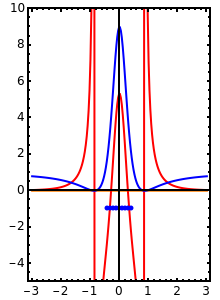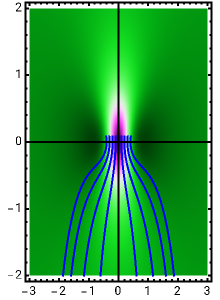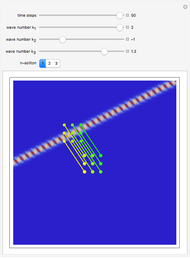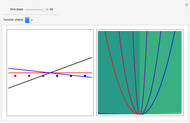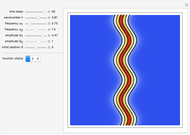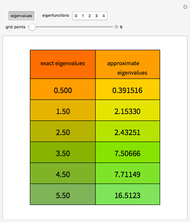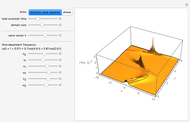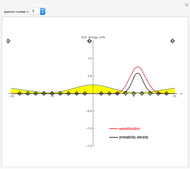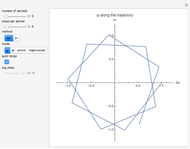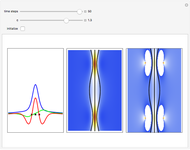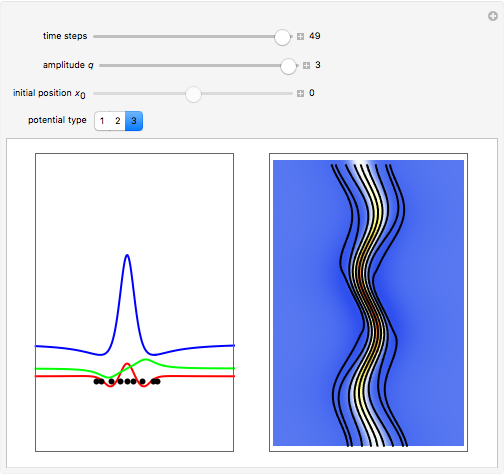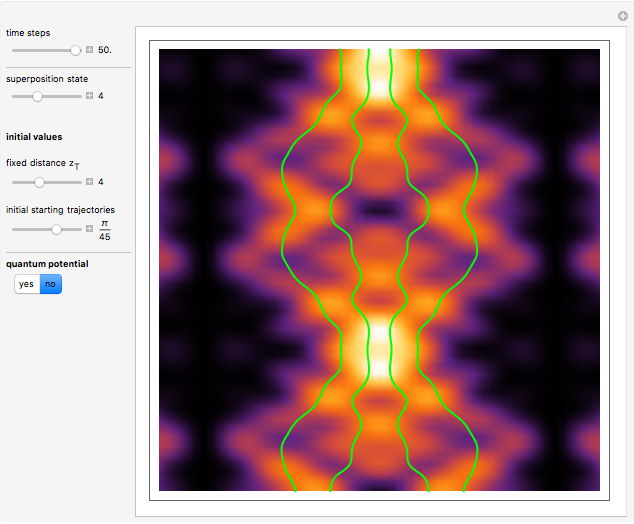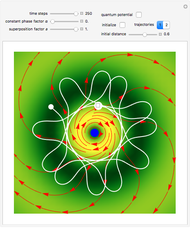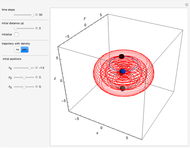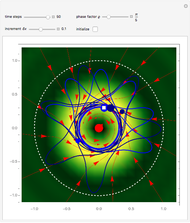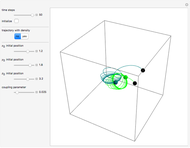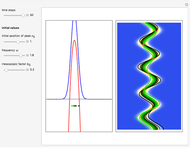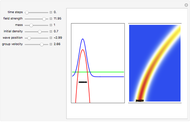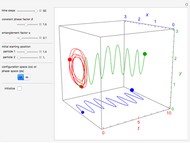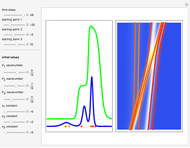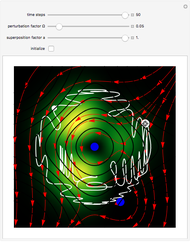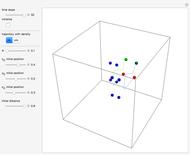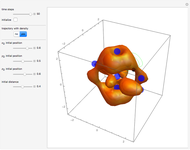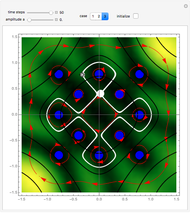Peregrine Soliton with Controllable Center in the Causal Interpretation of Quantum Mechanics

Requires a Wolfram Notebook System
Interact on desktop, mobile and cloud with the free Wolfram Player or other Wolfram Language products.
The standard "self-focusing" nonlinear Schrödinger equation, also known as the Gross–Pitaevskii equation, appears in wave propagation through nonlinear media such as signal transmission in optical fibers, Bose–Einstein condensation, and surface waves over sufficiently deep water. This Demonstration studies a spatially localized algebraic breather solution (Peregrine soliton), where the maximum of the squared wavefunction varies by initial conditions. The causal interpretation of quantum theory developed by Louis de Broglie and David Bohm introduced trajectories that are guided by a quantum potential. The velocities of single particles, following the trajectories, are determined by the phase of the wavefunction. The system is time reversible.
[more]
Contributed by: Klaus von Bloh (November 2011)
Open content licensed under CC BY-NC-SA
Snapshots
Details
The nonlinear Schrödinger equation is  , with
, with  , and so on, where
, and so on, where  is a complex function and
is a complex function and  is its complex conjugate. Here the common standard notation is used, where
is its complex conjugate. Here the common standard notation is used, where  is the temporal and
is the temporal and  is the spatial coordinate. The maximum of the original Peregrine soliton is located at the fixed point
is the spatial coordinate. The maximum of the original Peregrine soliton is located at the fixed point  [1]. Wang, He, and Li find in [2] a rational-like solution with a controllable center, which has the same structure as the original Peregrine breather solution.
[1]. Wang, He, and Li find in [2] a rational-like solution with a controllable center, which has the same structure as the original Peregrine breather solution.
In the eikonal representation of the wave,  , the gradient of the phase
, the gradient of the phase  is the particle velocity
is the particle velocity  . In this interpretation, the origin of the motion of the particle is the potential
. In this interpretation, the origin of the motion of the particle is the potential  , given by
, given by  , plus an additional term
, plus an additional term  . The latter may be interpreted alternatively as a kind of fluid pressure or quantum potential.
. The latter may be interpreted alternatively as a kind of fluid pressure or quantum potential.
For the complex-valued wavefunction,
 ,
,
there is an analytic solution for the quantum motion, where the squared modulus  of the wavefunction is interpreted as the wave density. The phase function
of the wavefunction is interpreted as the wave density. The phase function  for the breather is defined as
for the breather is defined as
 ,
,
from which the equation of motion is derived by solving:

The analytical solution is given, where  is an integration constant. The initial position is estimated by solving the equation
is an integration constant. The initial position is estimated by solving the equation  numerically. Real-valued trajectories are obtained for several
numerically. Real-valued trajectories are obtained for several  's. The starting positions of the particles are linearly distributed around the peak of the wave at
's. The starting positions of the particles are linearly distributed around the peak of the wave at  and
and  . You can control the paths together with the starting points by changing the initial conditions
. You can control the paths together with the starting points by changing the initial conditions  and
and  . The path
. The path  together with the starting point leads to a trajectory in
together with the starting point leads to a trajectory in  space.
space.
References
[1] D. H. Peregrine, "Water Waves, Nonlinear Schrödinger Equations and Their Solutions," Journal of the Australian Mathematical Society, Series B, 25(1), 1983 pp. 16–43. journals.cambridge.org/action/displayAbstract?fromPage=online&aid=3968224.
[2] X.-C. Wang, J.-S. He, and Y.-S. Li, "Rogue Wave with a Controllable Center of Nonlinear Schrödinger Equation," Communications in Theoretical Physics, 56(4), 2011 pp. 631–637. ctp.itp.ac.cn/EN/volumn/volumn_1277.shtml.
Permanent Citation
